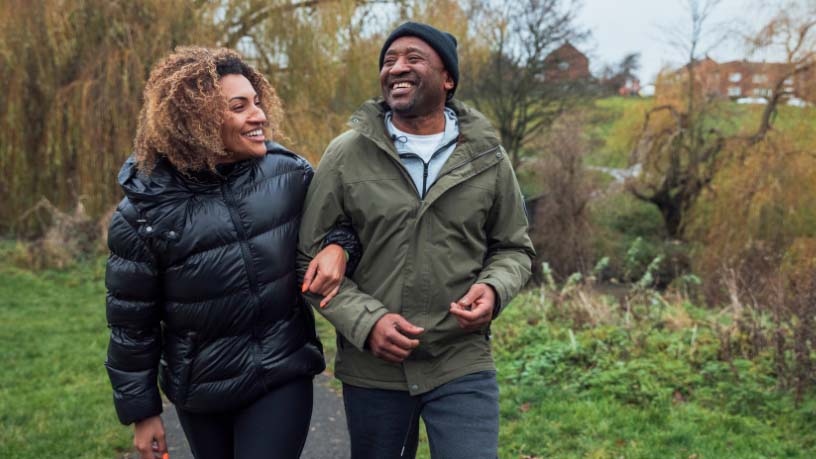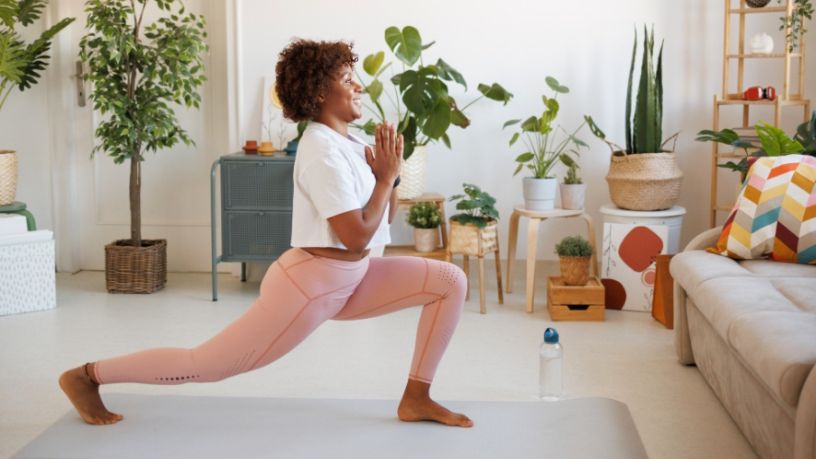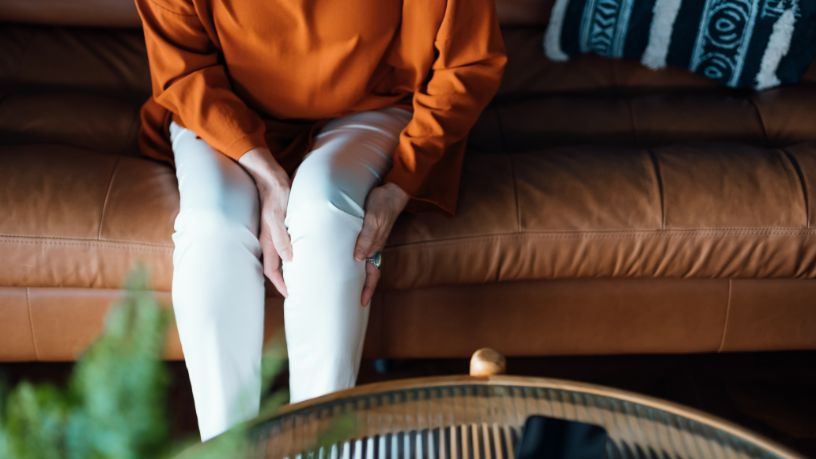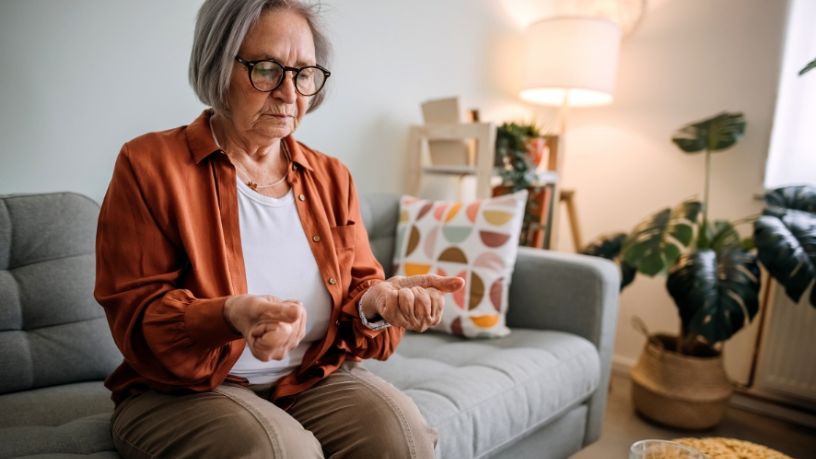Osteoarthritis is a joint disease that can significantly impact your health and wellbeing.
On this page
Key takeaways
The condition commonly affects knees, and it’s more common in older people and women.
Signs and symptoms of osteoarthritis include pain and stiffness.
The most common type of arthritis, osteoarthritis is a degenerative joint disease that can lead to pain and stiffness.1 The condition commonly affects your knee, but it can also affect the hands, hips and spine.
Here, we look at the basics of knee osteoarthritis, including the signs and symptoms plus available treatment options.
What is knee osteoarthritis?
If you have osteoarthritis in your knee, the cartilage in the joint gradually wears away, decreasing the protective space between the bones. This can result in the bones rubbing on each other, which might also produce painful bone spurs called ‘osteophytes’. The lining of your knee joint may also become inflamed.
While osteoarthritis can develop at any age, you’re most likely to experience it after 50. Women are also more likely to develop it than men.2
Signs and symptoms of knee osteoarthritis
Knee osteoarthritis usually affects both knees, although you may only notice symptoms in one. Signs and symptoms of the condition may include:
- pain in and around your knee, which may worsen when you’re active
- stiffness in your knee after periods of rest
- your knee giving way or locking
- lack of normal mobility in your knee
- creaks or grinds in your knee when you move it.
What causes knee osteoarthritis?
It’s not exactly clear why people develop osteoarthritis in their knees. However, there are certain factors that may increase your risk. These include:
- older age
- being female
- being overweight
- a family history of osteoarthritis.3
Osteoarthritis can also develop after an injury to your knee joint, or it may be a long-term result of a physically demanding job. It may be that several factors combine to make your knee more susceptible to the condition.
How is it treated?
Unfortunately, there’s no cure for osteoarthritis.4 But, you can take steps to manage the condition and keep your symptoms under control.
Treatment is typically aimed at reducing pain and stiffness, which can help improve your knee’s function and quality of life. To assist you, your GP may refer you to:
- a physiotherapist
- an occupational therapist
- an orthopaedic surgeon.
Treating knee osteoarthritis usually involves a combination of approaches, including:
Lifestyle changes
As being overweight can put more stress on your joints and make osteoarthritis worse, it may help to lose some excess weight to manage your condition.
A dietitian can help you tailor a weight loss program that suits your lifestyle.
You may also do regular physical activity aimed at improving your symptoms, increasing your range of motion, strengthening your muscles and improving your general fitness. For example, swimming and other water exercises can help take pressure off your knees while you achieve your fitness goals.5
To relieve some of the pressure on your knees, you might also consider:
- using a walking stick
- wearing shoes with a soft, thick, cushioned and shock-absorbing sole
- adding heat or ice to your affected joint
- practising mindfulness, such as meditation.
Medication
Non-steroidal anti-inflammatory tablets, creams or gels (NSAIDs) may help ease pain and stiffness caused by osteoarthritis. Your doctor might recommend one or more of these drugs if lifestyle changes alone don’t help.
It’s important to note that you shouldn’t take NSAIDs for too long, due to the risk of side-effects.6
In some instances, your doctor may prescribe a short-term course of opioid painkillers for severe symptoms.
Likewise, if you have a particularly painful, swollen knee joint, your doctor may recommend a steroid injection directly into the affected joint. The injection can last for weeks or months.
Devices and other therapies
For a drug-free approach, your physiotherapist might suggest a transcutaneous electrical nerve stimulation (TENS) machine. This lightweight device delivers mild electrical currents to your skin, which is thought to relieve pain.7
Your physio may also suggest aids, such as knee braces and supports, which can be used alongside other treatments to help support your knee.
An occupational therapist can advise you on how to rearrange your car, home or workplace to ease stress on your knee. This might include fitting your bath or shower with a chair, investing in a bed raiser and installing grab rails.
Bupa Health Programs
Discover our programs designed to help you recover and stay out of hospital where you can.
Surgery
If your osteoarthritis causes severe pain that all other non-surgical treatments can’t resolve, your doctor may suggest surgery to restore your knee’s function, help relieve pain and improve your quality of life.
Common surgeries for knee osteoarthritis include:
- knee arthroscopy. This keyhole surgery may help ‘wash out’ the affected joint, particularly if it has been locking. However, the procedure generally isn’t recommended.8
- osteotomy. Here, your surgeon cuts and repositions your bone to avoid putting stress on the damaged part of your knee.
- partial or total knee replacement. Your surgeon may replace areas of your knee joint with artificial parts. This type of operation will most likely require post-surgery rehabilitation and care.
Resources
The Australian Physiotherapy Association can help you find a physio near you.
Chronic Pain Australia provides education and support for those living with chronic pain.
Musculoskeletal Health Australia provides information and support for people living with arthritis and musculoskeletal conditions. Visit their website or call them on 1800 263 265.

At Bupa, trust is everything
Our health and wellbeing information is regularly reviewed and maintained by a team of healthcare experts, to ensure its relevancy and accuracy. Everyone's health journey is unique and health outcomes vary from person to person.
This content is not a replacement for personalised and specific medical, healthcare, or other professional advice. If you have concerns about your health, see your doctor or other health professional.
1Mayo Clinic. (2021). Osteoarthritis. Mayo Clinic.
2National Institute of Arthritis and Musculoskeletal and Skin Diseases. (2023). Osteoarthritis. National Institute of Arthritis and Musculoskeletal and Skin Diseases.
3Healthdirect. (2024). Osteoarthritis. Healthdirect.
4NHS. (2023). Treatment and support Osteoarthritis. NHS.
5Arthritis Australia. (2024). Water exercise. Arthritis Australia.
6Better Health Channel. (2021). Medications - non-steroidal anti-inflammatory drugs. Victoria State Government, Department of Health.
7Versus Arthritis. (2024). Electronic Pain Relief (TENS). Versus Arthritis.
8Arthritis Foundation. (2024). Arthroscopy Not Recommended for Arthritis. Arthritis Foundation.
You might also like...
7 things I wish I knew before knee surgery
Knee surgery is a major operation that may require months of intensive recovery. Discover 7 common insights from those who’ve done it.
5 best exercises to strengthen your knee after surgery
If you’ve had knee surgery, support your recovery with these 5 physiotherapist-approved exercises. Regain strength and mobility safely at home.
Knee pain: A basic guide
Your knees are the largest joints in your body. They’re also among the most accident prone. Get to know the basics of knee pain.
Osteoarthritis
The most common arthritis in Australia, osteoarthritis develops over time and can result in painful joints. Find out how this condition might affect you.





